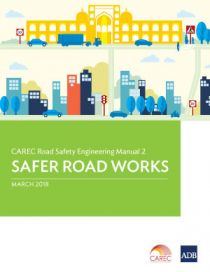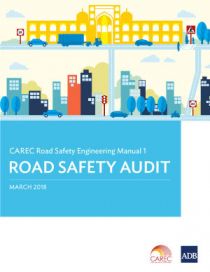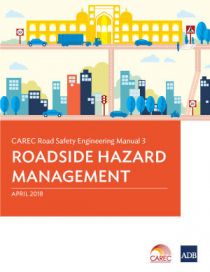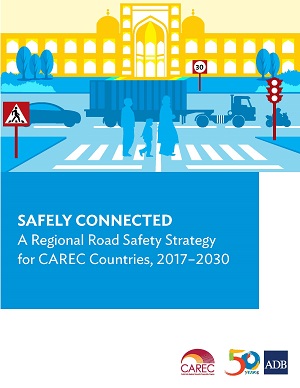Road accidents inflicts high economic costs. This ratio considers economic costs of road accidents with GDP (SEC-SEG-001).
Road accidents inflicts high economic costs. This indicator reports economic costs of road accident injuries in USD.
This manual explains good practices for roadwork sites, offering clear and simple guidance for CAREC road authorities to use to improve road safety at these sites for road users and workers alike. It offers information about the six-zone process, how to plan and implement a traffic management plan, and how to manage a safe worksite. This manual is essential reading for project managers, designers, supervision consultants, contractors, works supervisors and others who have a responsibility for safe worksites.
About the CAREC Road Safety Engineering Manuals
The series of road safety engineering manuals of the CAREC Program came from the endorsement of the CAREC Road Safety Strategy 2017-2030 by member countries. The strategy supports and encourages CAREC authorities to plan, design, construct, and maintain safe roads.

Research indicates that up to 28% of crashes are due to the road environment. The first and most important objective of road safety audit is to minimize the risk of crashes, and to minimize the severity of any crashes that may occur on a new road project. Road safety audit is suggested to be undertaken for all CAREC road projects. This manual provides full information for those who undertake the audits (practitioners) as well as for those who manage the audit process (policy makers).
About the CAREC Road Safety Engineering Manuals
The series of road safety engineering manuals of the CAREC Program came from the endorsement of the CAREC Road Safety Strategy 2017-2030 by member countries. The strategy supports and encourages CAREC authorities to plan, design, construct, and maintain safe roads.

Development of Road Safety Policy and Action Plan: Technical Assistance Consultant’s Report
The overall aim of the project is to support the Government of Mongolia in its endeavor of improving its road safety management capacity in order to reduce accident levels and related fatalities.
Consultants' reports describe activities by a consultant or group of consultants related to preparing a technical assistance project.
This document dated September 2018 is provided for the ADB project 49139-001 in Mongolia.
Road Safety Policy and Implementation in Mongolia
CAREC Road Safety Engineering Manual 3: Roadside Hazard Management

Single vehicle “run-off road” crashes are a significant problem on CAREC roads. They are particularly severe and can occur anywhere and at any time. Identifying, investigating, and treating roadside hazards are significant road safety challenges along CAREC highways. It uses a roadside hazard management strategy and the clear zone concept to explain how CAREC road authorities can (i) identify roadside hazards, (ii) investigate how best to treat those roadside hazards, and (iii) implement effective safety improvements. The manual explains the three groups of safety barriers and offers options for safer roadside furniture.
About the CAREC Road Safety Engineering Manuals
The series of road safety engineering manuals of the CAREC Program came from the endorsement of the 2017-2030 CAREC Road Safety Strategy 2017-2030 by member countries. The strategy supports and encourages CAREC authorities to plan, design, construct, and maintain safe roads.
Safely Connected: A Regional Road Safety Strategy for CAREC Countries, 2017-2030

Road accidents are the sixth leading cause of death in Central Asia., with a road traffic death rate of 10 to 25 per 100,000. A framework is needed for Central Asia Regional Economic Cooperation (CAREC) member countries to effectively implement CAREC’s commitment to road safety. CAREC’s strategy envisions making its road corridors safe, efficient, and attractive to motorists. The target is to halve the number of CAREC road corridor fatalities by 2030—translating to 23,000 lives saved and 250,000 serious injuries prevented annually.
The strategy builds upon existing strengths within the region, addresses gaps, utilizes good practice, and mitigates risks. This publication embodies the CAREC countries’ commitment to make road safety a priority.